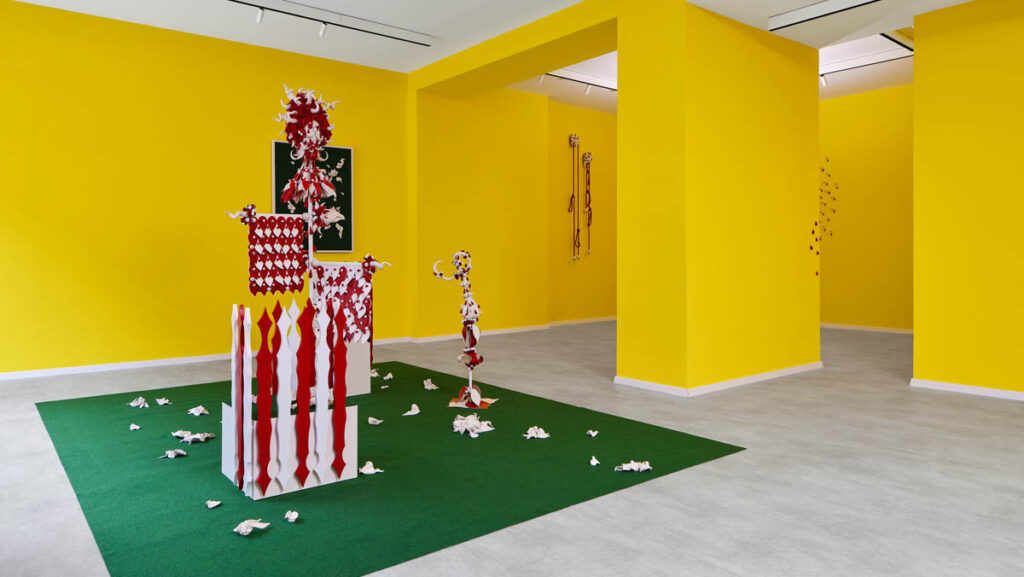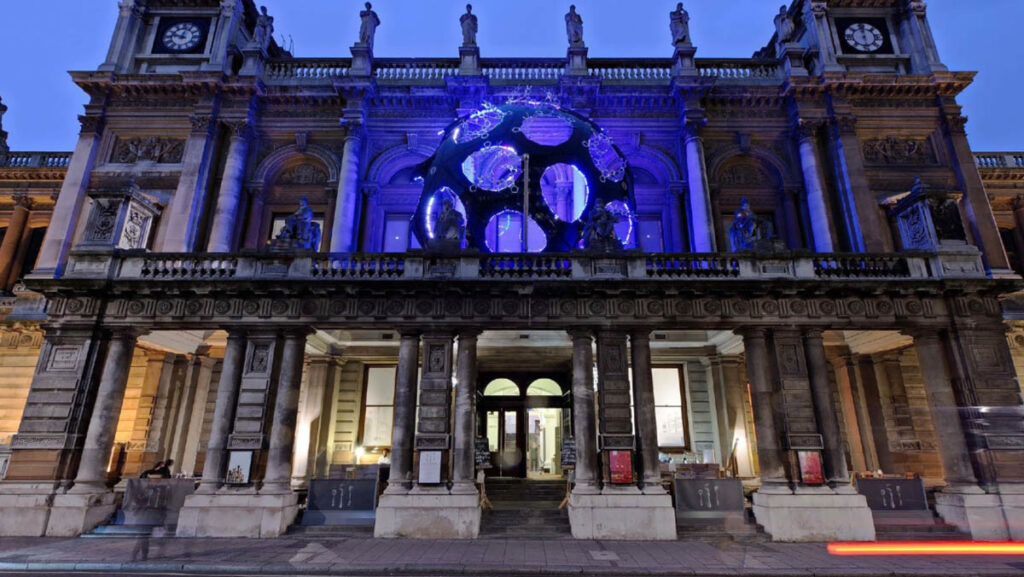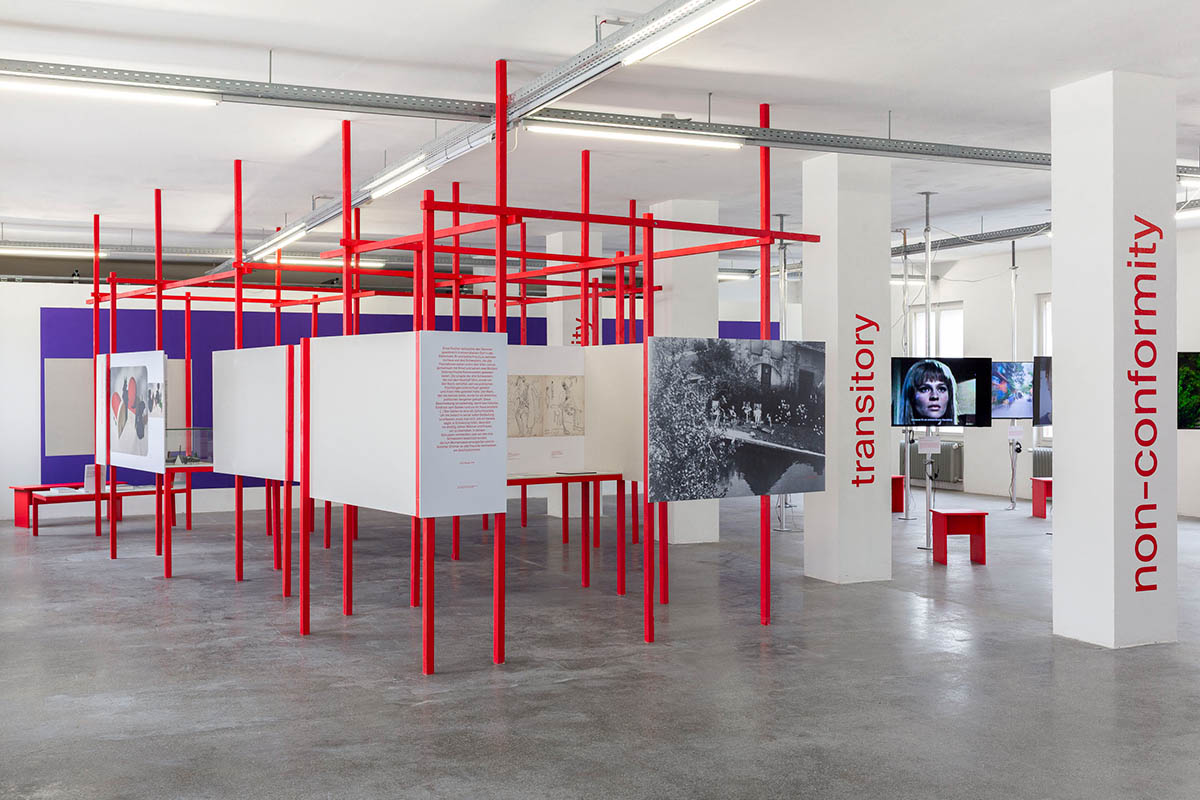
On the other side of the square, the opening of the wild thinX festival takes place—an event conceived as an act of resistance, not only against fascism, but also as a research method for speculative queer and non-conformist utopias.
Held from May 16 to 18 across 5020, Salzburger Kunstverein, Initiative Architektur, and Schloss Linderhof in Bavaria, the festival brought together six institutions from Salzburg to offer an interdisciplinarity of architecture, art, theory, and performance. The opening night featured Tangerine, a performance by Göksu Kunak, followed by the opening of two exhibitions at Salzburger Kunstverein: Moon, Sun, Mercury by Mikołaj Sobczak and Social InSecurity by Tania Gheerbrant. Sobczak’s performed Anti-fascist Art Manifesto, closing later on the night with a Dance Floor Research Club (D’FRAC) session led by Tanja Saban and Eitan Nir. The program was dense, but I won’t forget the experience of taking part on the second day with a schedule of workshops and panels engaged with themes of gender, architecture, and artistic practices. The morning started with two simultaneous workshops, Jack Halberstam and Damon R. Young led a session on concepts like atopia, utopia, dystopia, and heterotopia, while Elio Choquette offered a thought-provoking workshop on Transing Architecture, focusing on gender, disability, and undesigning diversity. In the afternoon, the Initiative Architektur hosted a series of panels that expanded on these ideas: experts from Princeton and other institutions discussed resistance and queer domesticity in architecture, followed by sessions on non-conformist design practices highlighting empathy and inclusive spaces. Followed by keynotes from Jack and Damon, the discussion was brought to a disruptive close by the performance ‚The Last Demand‘ by Bhenji Ra and Tati au Miel.
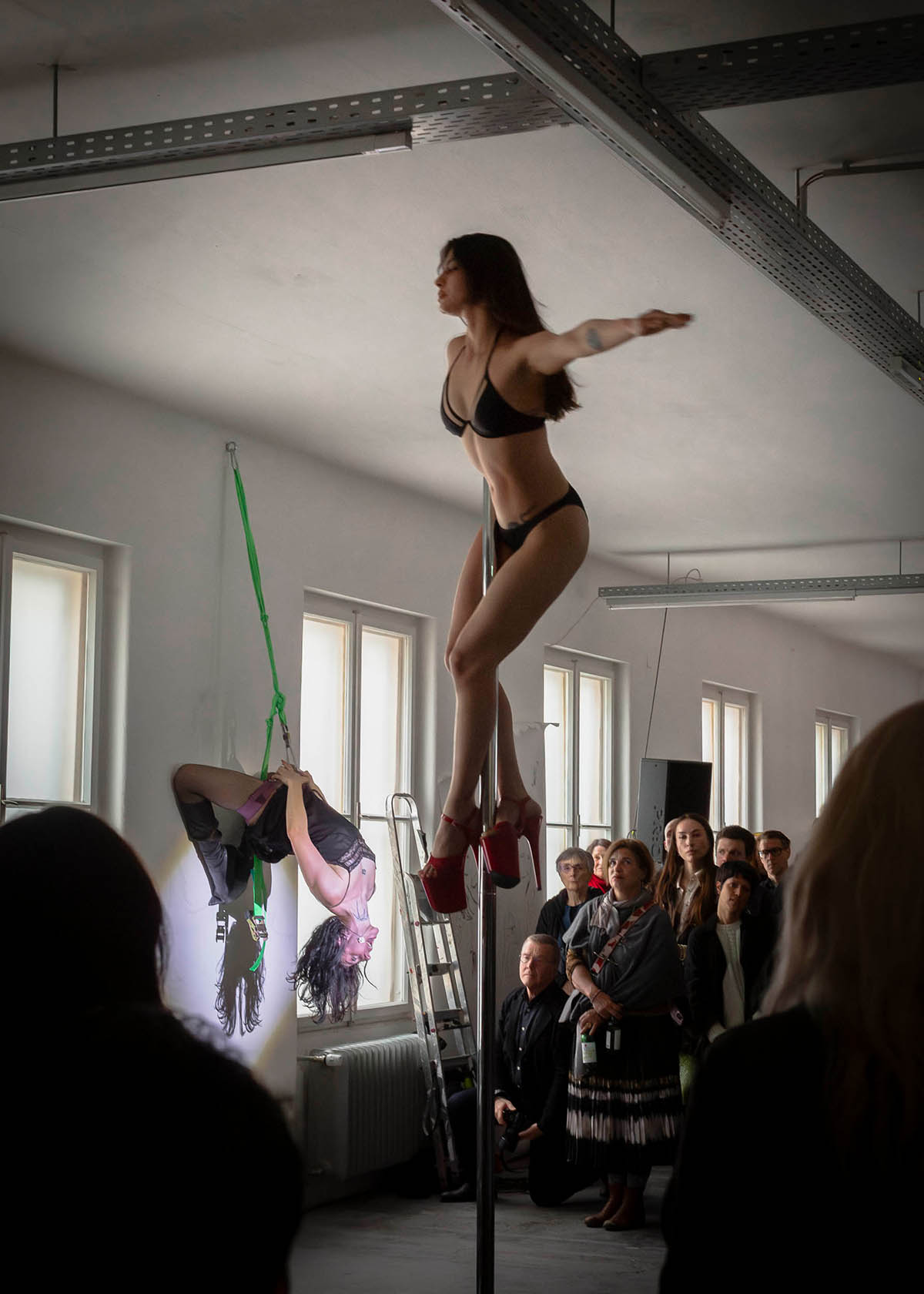
In 5020, the exhibition materializes the festival’s themes. Entering the space, the first thing to notice is a red construction, potentially guiding the visitors through a non-linear path. It is painted red, in relation to socialist ideology, and its labyrinth structure performs a way of re-writing history. Around the objects, a purple painted wall surrounds the hole exhibition, which represents LGBTQ+ and queer identity. Within this display, visitors meet the history of the jewish Daniel Baptist Feuerlöscher’s Papierfabrik (1884), a house used as a center for culture and political avant-garde, which resided a circle of artists called The Prenninger-Kreis. The house also holds its own archive, featuring works by Walter Ritter (1904–1986), whose drawings may once have been interpreted as burlesque fantasies; by Axl Leskoschek (1889–1976), an early participant in anti-fascist politics whose work belongs to a tradition of political resistance; and by Anna Lülja Praun (1906–2004), who later pursued a career in architecture and was among the first women to study it in Austria.
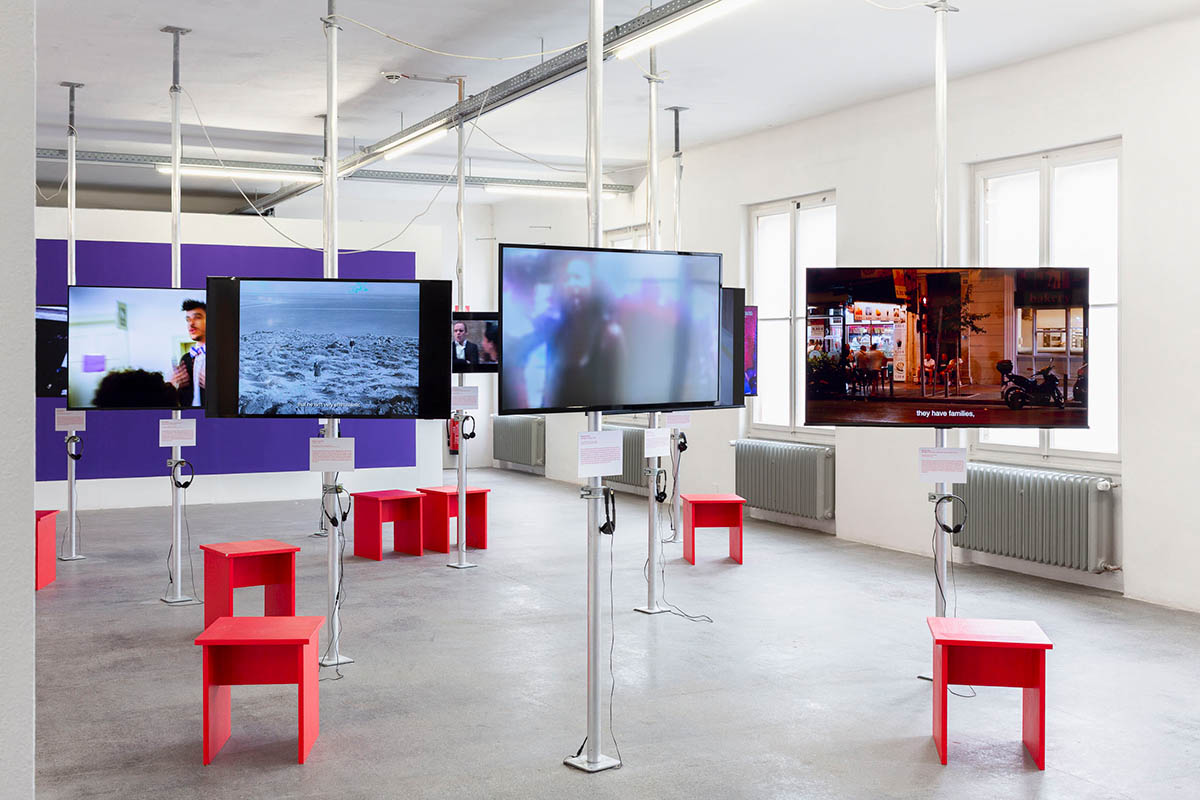
On the right side of the show, separated by a clear and linear division, a series of video works by contemporary living artists address everyday struggles, where artistic production, labor, and daily life exists in one form. Displayed these works side by side with the past histories of resistance, the curation suggests a relation between avant-garde and queerness, bodies that diverge from “straight” perspectives, developing their own necessary strategies for dealing with non-conformity. Displayed in nine monitors are the works from Marie Thereza Alves, Andrea Bower, Nicolas Cilins, Gordon Matta Clark, Mwangi Hutter, Hiroharu Mori, Draper Shreeve, and Rebecco Ann Tess.
I reached out to Sophie Goltz, the artistic lead of the project, to ask about the relationships between these temporalities and their curatorial process.
Francisco Valenca Vaz: What was the initial question behind curating wild thinX, the exhibition and the festival?
Sophie Goltz: One of the foundational questions driving wild thinX is: How can we resist the rising tide of authoritarianism, nationalism, and far-right ideologies through non-conformist spatial and artistic practices? The festival and exhibition offer a speculative and symbolic space for rethinking historical and contemporary resistance strategies, particularly in light of the current global regression in democratic norms and bodily autonomy.
Amid today’s resurgence of fascist rhetoric—evident in anti-trans, anti-reproductive rights, and „anti-gender ideology“ campaigns—wild thinX moves across disciplines to envision futures of fluidity, collectivity, and non-normativity. This is explicitly addressed in the curatorial concept: „Was früher der ‚Volkskörper‘ war, ist heute der ‚bedrohte Körper ‚“—linking fascist body politics of the past with contemporary scapegoating of queer and trans bodies.
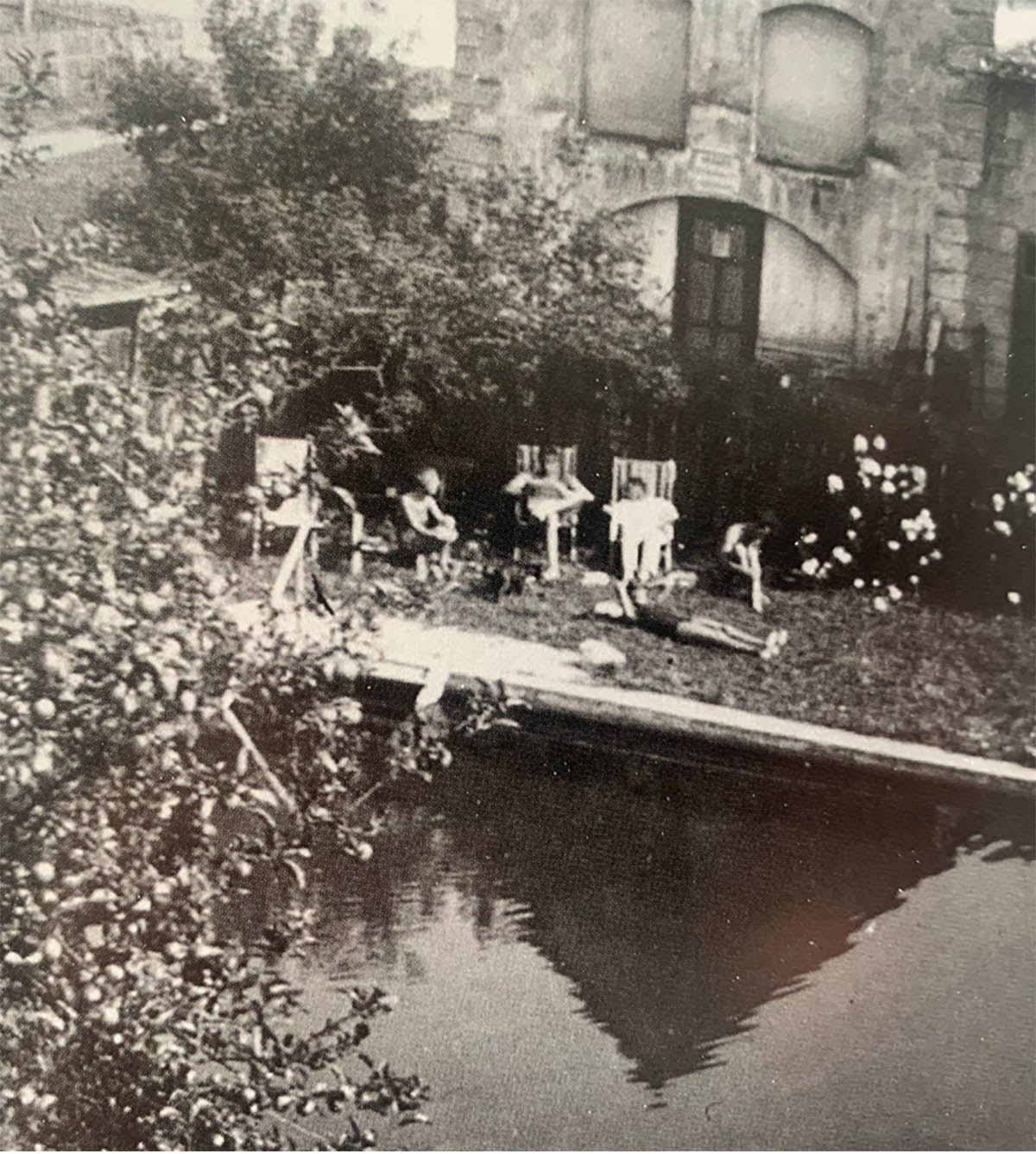
How did „non-conformity“ shape the selection of artists?
Non-conformity was not simply a theme but a method of curation. Artists were chosen not just for their aesthetic contributions but also for how their practices challenge systems of normalization, whether through architecture, video, performance, or activism. Figures like Göksu Kunak, Bhenji Ra/Tati au Miel and Mikołaj Sobczak confront visual regimes of fascism and heteronormativity, pushing back with queer excess, fluidity, and satire.
The idea of non-conformity also means seeking practices that do not fit neatly into art historical or disciplinary boxes. The inclusion of Palace of Un/Learning, D’FRAC, or the Prenniger Kreis exemplifies this: artists and collectives that blur the lines between living, designing, resisting, and dreaming.

What is the significance of the „Papierfabrik“ as a site of rural anti-fascist resistance, and how did you approach displaying it in an exhibition format?
The Papierfabrik in Prenning, tied to the Prenniger Kreis, becomes a site of memory and spatial resistance. This rural enclave was not just a refuge, but a cultural and architectural experiment in queer-socialist kinship and anti-fascist resistance, as highlighted by Prof S.E. Eisterer’s research and paper presented at the wild thinX symposium. (All contributions can be viewed online here: www.5020.info)
Displaying this in an exhibition required careful mediation: rather than nostalgic representation, the curatorial gesture aimed to activate its legacy for the present. By situating it among contemporary works, the exhibition invites viewers to see historical resistance as unfinished and to read it as a lens through which to understand contemporary spatial politics and identity struggles.
Do you think the Salzburg public may relate more easily to the Prenniger Kreis than to the large cities’ histories of resistance?
Sophie Goltz: Yes, and this was likely a strategic and poetic choice. Often associated with conservative cultural heritage (Mozart, baroque architecture, etc.), Salzburg gains an intimate mirror in the Prenniger Kreis, showing that resistance does not always arise in metropolitan epicentres. The proximity of the historical site and its personal, lived utopianisms offer a tangible local entry point into the more abstract or transnational discourses explored by today’s artists.
This historical tethering creates a palpable bridge between rural anti-fascism and contemporary queer-feminist practices, allowing Salzburg’s audience to see themselves not on the periphery of cultural debate, but as active participants.
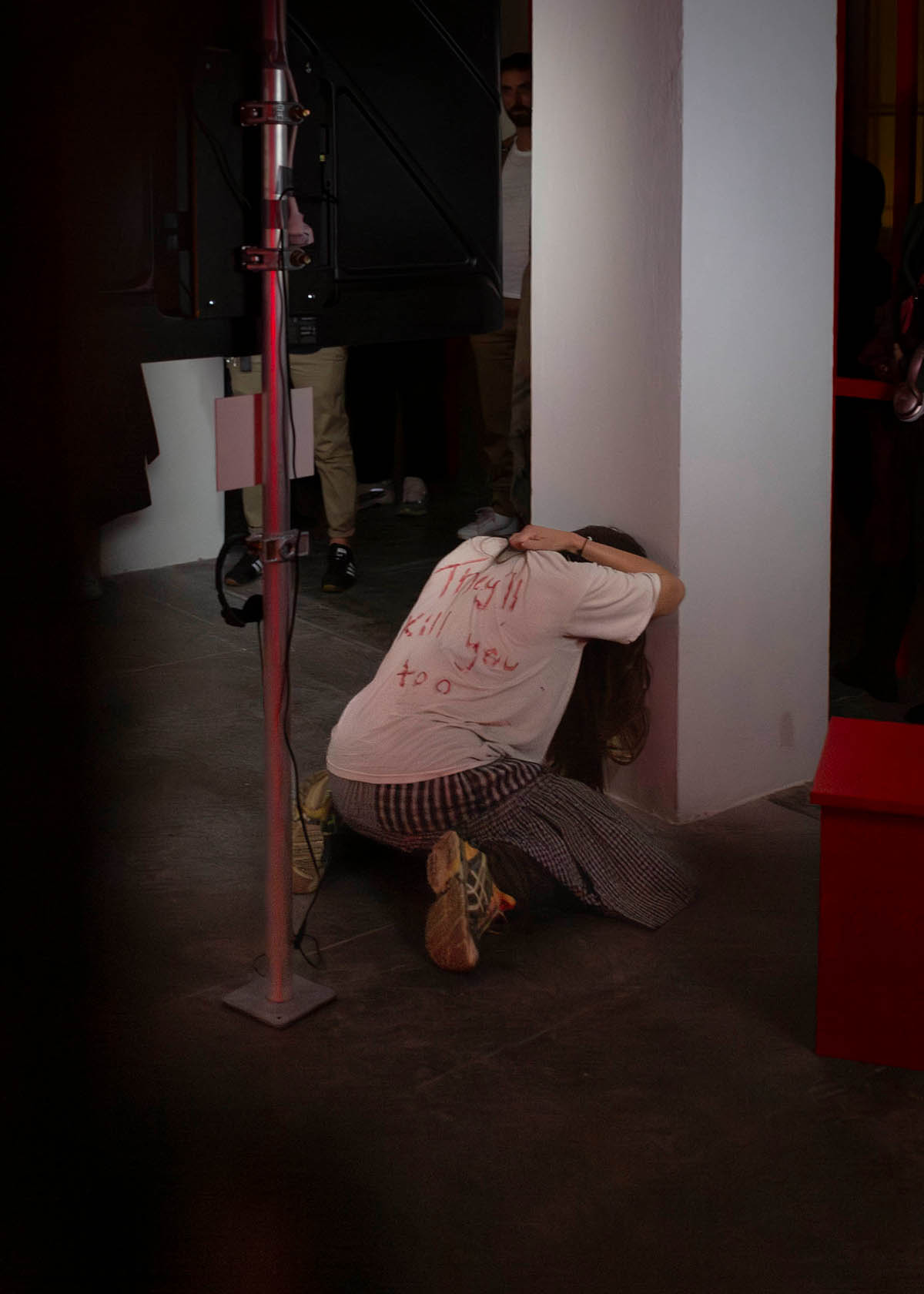
How does the exhibition engage with present-day urgencies, given the global rollback on trans and reproductive rights, for instance?
Sophie Goltz: The exhibition is deliberately shaped around these urgencies. The festival and the exhibition make direct references to the backlash against trans rights and gender diversity, calling out the „Rede von Gender-Ideologie“ as a contemporary form of fascist projection, where individual bodies become battlegrounds for collective fears.
By hosting queer theorist Prof Jack Halberstam, as well as Prof Damon R. Young, alongside architect and crip activist Elio Choquette, and art historian Clare Barlow, wild thinX centers trans, queer, and intersectional voices, not as marginal, but as the epistemic core of both critique and creative imagination. The show thus refuses cultural neutrality: it is a manifesto against indifference.
How is the relation between the personal and political in the exhibited works? (Especially the video pieces that address the body’s as daily politics)
Sophie Goltz: Many video works (e.g., by Andrea Bowers, Nicolas Cilins, or Rebecco Ann Tess) politicise the body as a space of lived contradiction, vulnerability, and agency. The body becomes a site of negotiation between care and control, visibility and erasure, normativity and deviance. Sobczak’s Anti-Fascist Art Manifesto and Bhenji Ra’s/Tati au Miel’s The Last Demand performances explicitly address the intersections between personal trauma, historical violence, and collective resistance, embodying the queer adage that the personal is political. These pieces are not just representations—they are acts of re-worlding through embodiment.
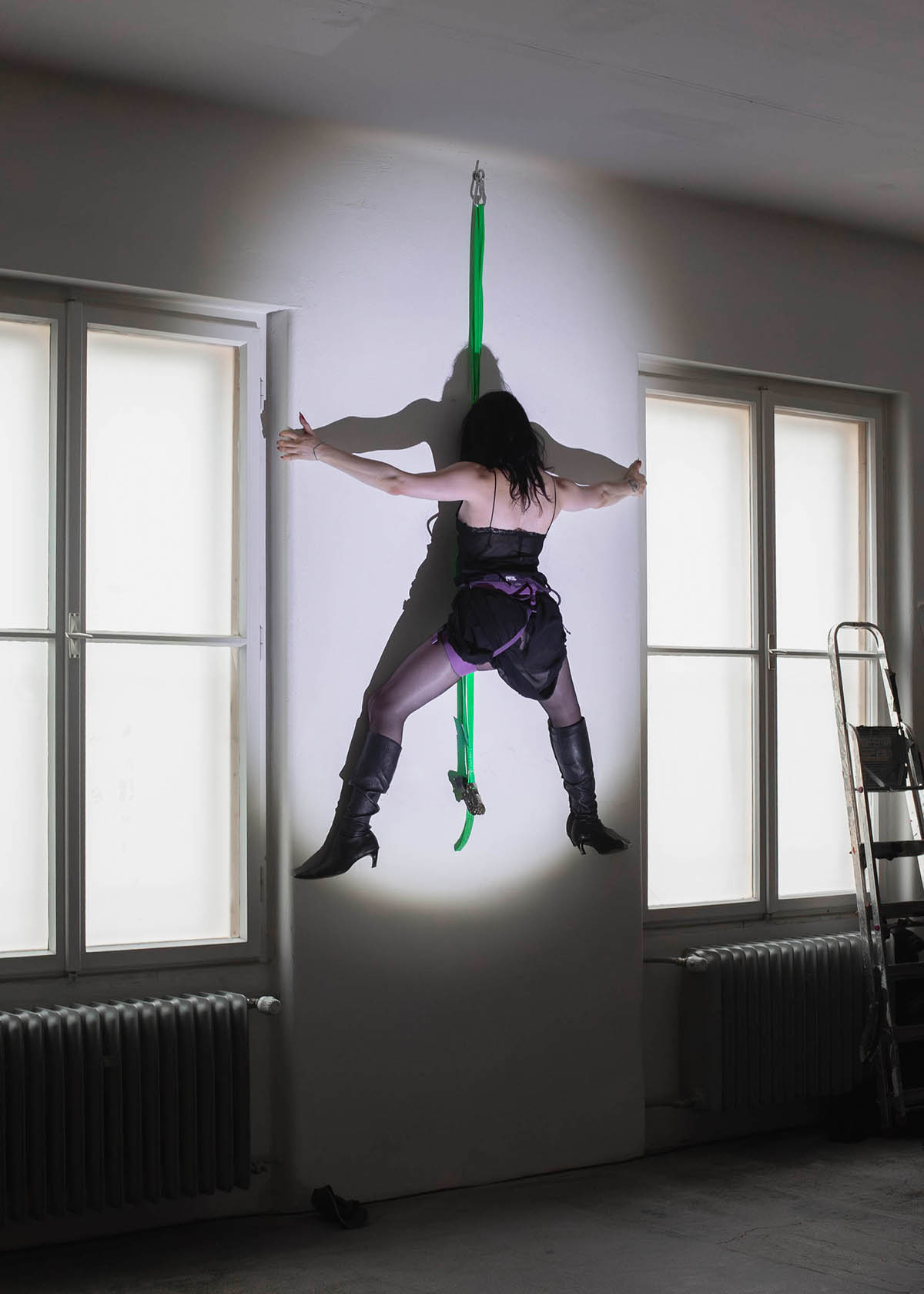
What were the difficulties of presenting such a thematically bold project in Salzburg?
Sophie Goltz: Salzburg’s cultural identity, steeped in tradition and tourism, might not seem like the obvious site for such bold political work. Nevertheless, that is precisely why wild thinX matters here: it intervenes in a city known for cultural preservation, offering instead a cultural provocation. Challenges likely included institutional skepticism, conservative backlash, or lack of familiarity with queer and decolonial discourses. However, the curatorial team’s (including Niklas Koschel and Karolina Radenković in collaboration with S.E. Eisterer) decision to anchor the show in regional anti- fascist history and invite international speakers with deep community roots (architects Wenke Schladitz / Christoph Wagner) helps build alliances and complicate the local-global binary. Finally, the exhibition stages a double movement, as you put it: it looks backwards to anti- fascist legacies like the Prenninger Kreis while urgently illuminating emergent forms of fascism—bodily, legal, and spatial—that must be recognised and resisted anew. This is culture as counter-power: an aesthetic, spatial, and affective refusal of resignation. In that sense, wild thinX does not merely display art—it rehearses resistance.
The wild thinX exhibition is on view until August 29, 2025 (extended duration). For further information and the full programme, please see: www.5020.info/programm/wild-thinx




